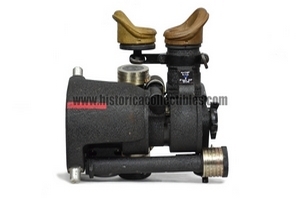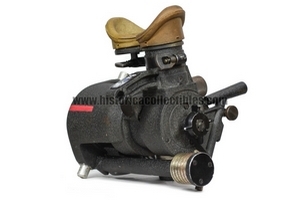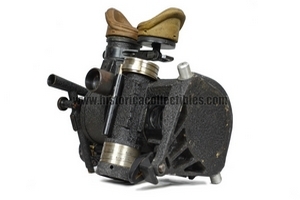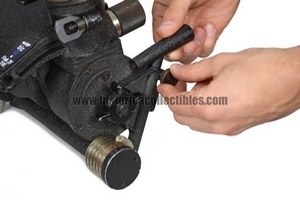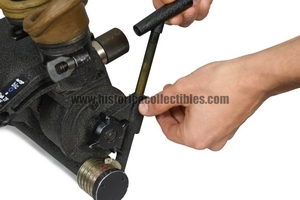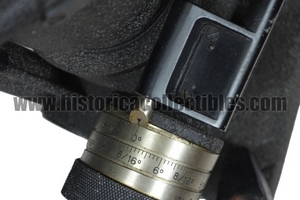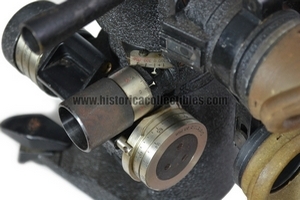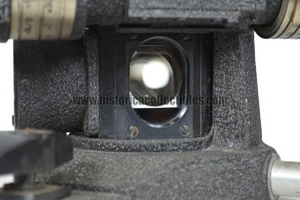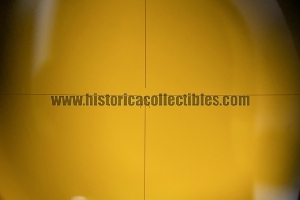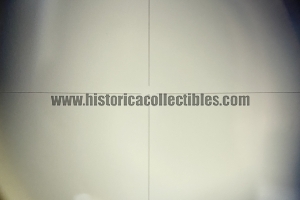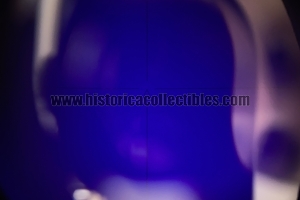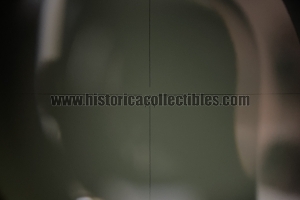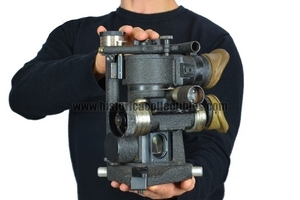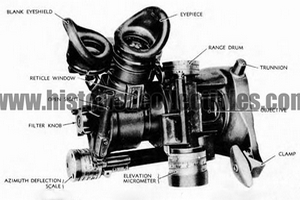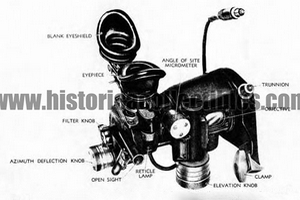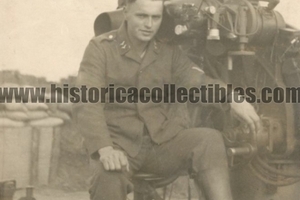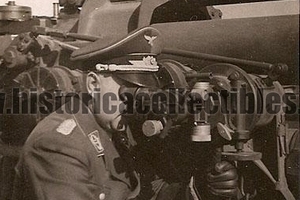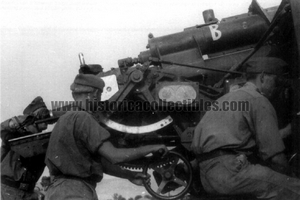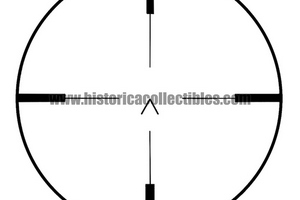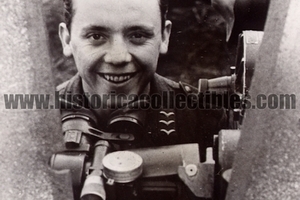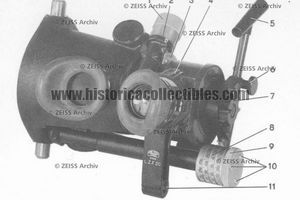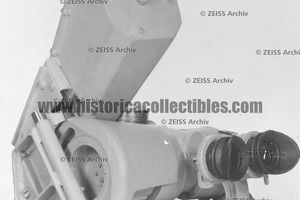Luftzielfernrohr Flak ZF 20E blc (Carl Zeiss), Spanish Civil War, 1939
Luftzielfernrohr 20E 4x17.5° installed on the 88 mm Flak Anti-Aircraft Cannon "Flugzeugabwehrkanone", used during the Spanish Civil War.
This model is in fact part of a limited batch that Zeiss produced for the 88 mm Flugzeugabwehrkanone, used by the German Condor Legion in support of Francisco Franco's Spanish Nationalist forces during the Spanish Civil War, fought between July 1936 and April 1939, which pitted the Nationalists (known as nacionales), authors of a coup d'état promoted by Emilio Mola and other soldiers including Francisco Franco, against the Republic, and the republicans (known as republicanos), made up of troops loyal to the legitimate government, led by the Marxist-inspired Popular Front.
This scope, which appears to have the serial number "8", is among the very first produced with the encrypted Carl Zeiss "blc" brand in 1939, the year in which, precisely by order of the Oberkommando der Wehrmacht, all manufacturers had to use a 3-digit code to encrypt their mark and make each object "anonymous" in the eyes of the enemy.
The production of this object coincides exactly with the last year of the Spanish Civil War.
The optics are in excellent condition and all the mechanisms work very smoothly and precisely, as does the insertion of the 4 colored filters (Grey, Yellow, Purple, Clear).
This optics weighs 8 kg.
CARL ZEISS archive:
The air rifle scope 20 is used to direct anti-aircraft guns against air and ground targets. It is used particularly if the central aiming device fails in order to create a line of sight on the gun that can be adjusted in relation to the barrel axis by the windage and elevation angle and the attachment angle. The viewing port is arranged to be pivotable in the height direction relative to the rifle scope. The secondary mirror is used in conjunction with the aerial riflescope 20. It sits in front of the view and increases it by 200 mm. This means the target can be targeted from a covered position. The optical values of the air riflescope 20 are magnification 4x, field of view 17.5°, diameter of the exit pupil 5 mm. The weight of the air rifle scope is 8 kg.
Carl Zeiss takes its name from its founder, Carl Zeiss, who on November 17, 1846 chose the small town of Jena, in Thuringia, as the location for his precision optical equipment factory. Thanks to the severe quality control that Carl Zeiss imposed on his products, going so far as to personally destroy the microscopes that did not pass the tests, the newly formed Zeiss became the official supplier of the University of Jena and received the gold medal of the industrial exhibition in 1861 of Thuringia as the best research instrument produced in Germany, awarded to the Stand I microscope of 1857.
In 1866 the thousandth microscope was produced and the name Zeiss became known throughout European scientific circles. Thanks to studies on the Porro prism, in 1893 Abbe patented double prism binoculars, which accentuated the perception of depth.
The mass production of Zeiss binoculars began in 1894, already at the beginning of the twentieth century more than 30,000 were made, at the beginning of the First World War the quota had risen to 500,000 and, at the end of the Second World War, as many as 2,260,000 were produced binoculars for the civil and military market.
Models were made starting from 4x11 mm to 12x40 mm, up to real giants such as the 80 mm and 100 mm. Thanks to studies conducted on the perception of light in low light situations, it was demonstrated that the average dilation of the pupil in an adult is approximately 7 mm.
For this reason, the 7x50 mm model was introduced in 1910 and remained on the market until 1917 with few changes to the materials used. In 1926, following the post-war crisis of the First World War with the Treaty of Versailles which bankrupted many important German companies, Zeiss purchased "C.P. GOERZ" and founded Zeiss Ikon in 1926.
In 1937 Zeiss had commercial contacts and factories in more than 29 countries around the world. From '33 Zeiss acquired interest from the Nazi regime, which balanced production towards military instruments. It successfully produced binoculars with wide-angle optics for military use, pressure-resistant optical systems for U-boats, periscope binoculars for targeting tanks. Furthermore, Zeiss cameras were mounted on the V2s for remote sensing operations of the English coasts.
On 1 November 1935, Zeiss, in the figure of Alexander Smakula, patented a process for the treatment of optical glass with extraordinary results in terms of light transmission. Remained a military secret until 1939, it was adopted on binoculars to reduce ghost images and internal reflections.
During the Second World War, there were numerous bombings against the Zeiss factories. Jena was bombed several times by the Allies starting in 1944.
Stuttgart was razed to the ground, although the Contessa-Nettel factory suffered little damage. The bombing of Dresden, in addition to devastating the city, also caused considerable damage to the Zeiss Ikon headquarters.
On April 13, 1945, American military forces entered Jena, surprising themselves that the bombing had not caused any significant damage. The main planetarium was in ruins, while the factories remained operational.


